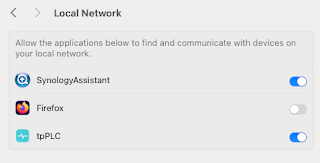Geeking in technology since 1985, with IBM Development, focused upon Docker and Kubernetes on the IBM Z LinuxONE platform In the words of Dr Cathy Ryan, "If you don't write it down, it never happened". To paraphrase one of my clients, "Every day is a school day". I do, I learn, I share. The postings on this site are my own and don’t necessarily represent IBM’s positions, strategies or opinions. Remember, YMMV https://infosec.exchange/@davehay
Wednesday, 30 September 2009
Webcast: Unleash the Power with WebSphere Portal 6.1 and Web 2.0
Wednesday, 23 September 2009
Using Sametime Links within a simple portlet
<head>
<link rel="stylesheet" href="http://stargate.uk.ibm.com/sametime/stlinks/stlinks.css" type="text/css" />
<script type="text/javascript" src="http://stargate.uk.ibm.com/sametime/stlinks/stlinks.js">
</script>
<script type="text/javascript" >
setSTLinksURL('http://stargate.uk.ibm.com/sametime/stlinks/', 'en');
STHost = 'stargate.uk.ibm.com';
writeSTLinksApplet('ibm','',false);
</script>
</head>
<body>
<script type="text/javascript">
writeSametimeLink('CN=domadmin,O=ibm', 'Portal Admin', false, 'icon:yes;');
</script>
</body>
</html>
WSADMIN saved my metaphorical bacon
- cd $WAS_HOME/bin
- Run: -
- Wait until wsadmin responds
- Issue the securityoff command (no space between security and off)
- Issue the exit command.
Friday, 18 September 2009
WebSphere Portal and Lotus Web Content Management performance tuning guides and supplemental content
Then, refer to the supplemental information provided in developerWorks articles, articles published on the WebSphere Portal Family wiki, and other resources noted in the Additional resources section of this technote..."
Support Content Highlight for WebSphere Portal/WCM (September 2009)
Learning WebSphere Portal Family Products
Thursday, 17 September 2009
Preventing WCM from generating sessions when content is accessed anonymously
Wednesday, 16 September 2009
"Enter password for default keyring to unlock"
Enter password for default keyring to unlock
This occurs because the keyring has been locked with the old OS password.
The solution ?
- Choose Applications -> Accessories -> Passwords and Encryption Keys ( or simply run the command seahorse )
- Navigate to the Passwords tab
- Select the Passwords: login link
- Click the right mouse button
- Choose Change Password
- Enter the OLD OS password
- Enter the NEW OS password - twice
- Click the Change button
- Close the Passwords and Encryption Keys applet
Hmmmmmmmmm, Mapalicious
IBM Custom Content Assembler
Have you ever wished you could customize the information that comes with a product?
This application provides you with the unique ability to create custom documents by selecting the information you want to keep. Once you are done customizing you can output a PDF or HTML file that only includes the information you select ...
https://info2.lotus.com/mapalicious/home
Includes DAOS for Notes and Domino 8.5, Lotus Quickr Services for Lotus Domino 8.2 and Lotus Sametime Advanced 8.0.1.
Tuesday, 15 September 2009
Problems with 32-bit Lotus Forms Server API on 64-bit JVM
at java.lang.ClassLoader.loadLibraryWithClassLoader(ClassLoader.java:950)
at java.lang.System.loadLibrary(System.java:453)
at com.PureEdge.DTK.<clinit>(Unknown Source)
at java.lang.J9VMInternals.initializeImpl(Native Method)
at java.lang.J9VMInternals.initialize(J9VMInternals.java:194)
Wednesday, 9 September 2009
Again, Google has the answer, Google is my friend ...
The install detected that the Domino server ID is password protected. This password is required to complete the Sametime server configuration. Enter the password, and choose Next to validate the password.I've not seen this before - I even tried setting a password on the offending ID file ( \Lotus\Domino\data\server.id ) using a Notes 8.5 Basic client, but to no avail.
As always in these situations, a quick Google search brought up Dan Silva's blog post: -
http://dansilva.org/2008/01/help-needed-sametime-8-server-installer-says-serverid-has-a-password.html
which recommended setting an environment variable - STSkipDominoPasswordCheck=true - to force the installer NOT to check for a password.
I did this and restarted the ST installer and .... it worked like a dream.
It's also worth noting that I could have achieved the same objective by starting the installer with a command line switch: -
\temp\sametime\Server\setupwin32.exe -V STSkipDominoPasswordCheck=true
Perhaps I'll try this next time ...
Friday, 4 September 2009
Portal V6.1 Performance Tuning Open Mic Call on September 23, 2009
Thursday, 3 September 2009
Obsession ( no, not the bloomin' perfume from Marks and Spencer )
that I have been inordinately obsessed with a particular subject this
past few months - no, not WebSphere, not even coffee, not even driving
my MC topless, I'm talking about Battlestar Galactica.
Having just finished the fifth season of the show ( which is frakkin'
A-W-E-S-O-M-E ), I've been Googling around for related content,
including a certain Mr Hendrix playing "All Along the Watchtower" and
a certain Mr Glass with "Metamorphosis: One".
Today, I found the mother lode here: -
I don't think it contains any spoilers, but it'd help to have watched
all/some of the show before watching this clip ...
Enjoy
Rational Application Developer 7.5 - Portal Toolkit in five parts
Note to self - Firefox and local connections
Whilst trying to hit my NAS from Firefox on my Mac, I kept seeing errors such as:- Unable to connect Firefox can’t establish a connection t...

-
Error "ldap_sasl_interactive_bind_s: Unknown authentication method (-6)" on a LDAPSearch command ...Whilst building my mega Connections / Domino / Portal / Quickr / Sametime / WCM environment recently, I was using the LDAPSearch command tha...
-
Another long story cut short, but I saw this: - curl: (58) unable to set private key file: 'dave.pem' type PEM from my Ansible...
-
Whilst trying to hit my NAS from Firefox on my Mac, I kept seeing errors such as:- Unable to connect Firefox can’t establish a connection t...
